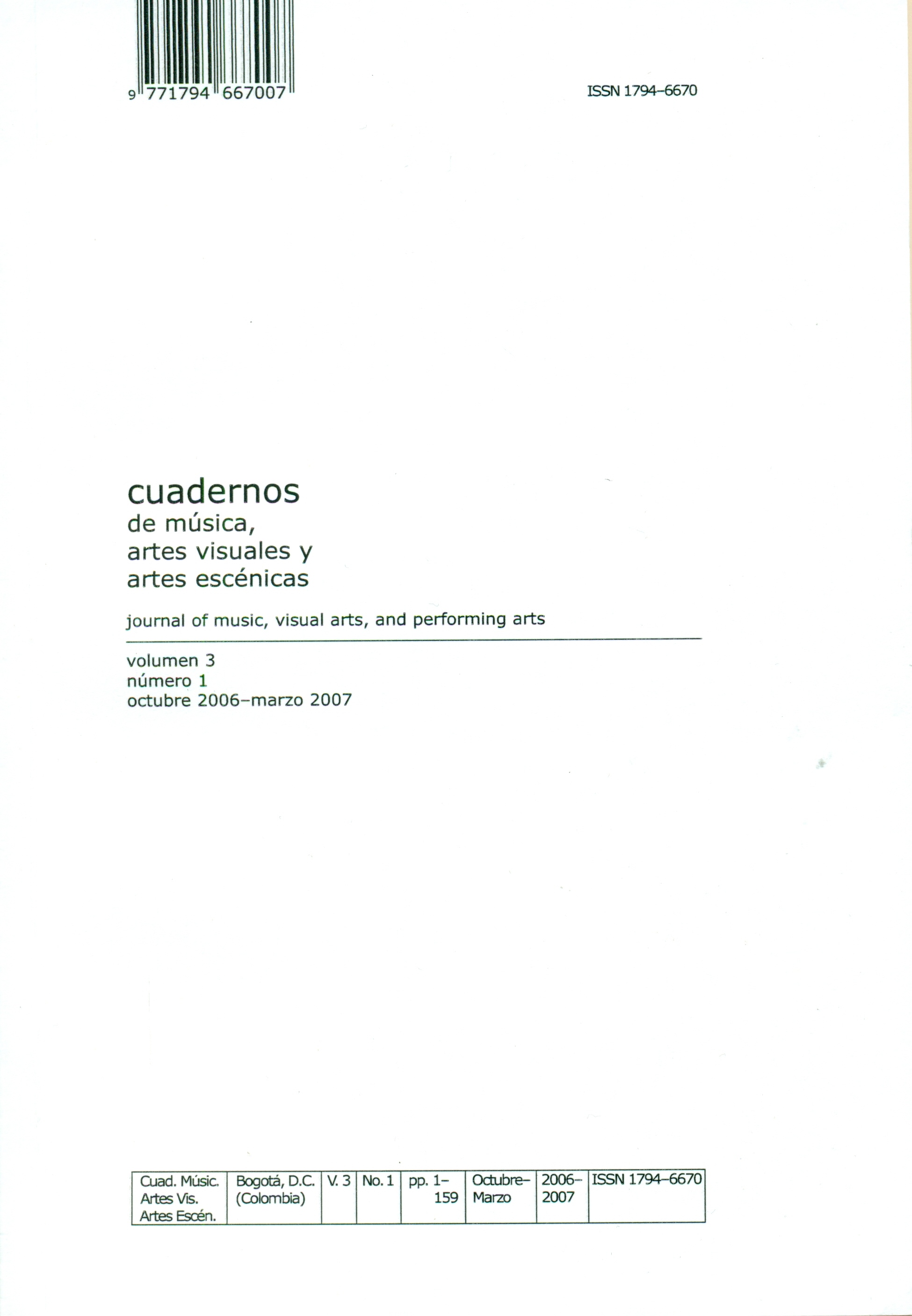Abstract
The document is the result of a research process developed due to the Colombian Ministry of Culture National Grant for Dance Research in 2006, and it is directed to those interested in the education, the creation and the presentation of dance, as well as other arts and techniques that imply the work with the body. It is presented as an analysis of the different forms of communication, which aim towards causing states of movement. Various tools are suggested for dance teachers, choreographers and, in general, any educator or artist who works with the direction of movement. The research tries to expand the field of study since it finds that the contents do not only concentrate in the field of dance. Therefore, the focus is not reduced to a single viewpoint, but opens its spectrum with an inclusive character.The conceptual base of the investigation is Somatic Education; several somatic modalities are analyzed according to their relation with dance and the communication of movement. The somatic systems promote the importance of stimulating the kinesthetic sense to encourage the re-education of the nervous system. Among the somatic modalities the Alexander Technique is highlighted because its principles can prepare the teacher as well as the student towards deeply connecting to their own bodies and the dynamic process of alignment. Observing as a witness who departs from his own sense of self provides wisdom to suggest in a process of communication. The images go to the intuition; the concepts go to the rational mind; the touch goes directly to the nervous system. The images, the concepts and the touch are media that are perceived, processed and give as result different experiences. The investigation proposes the integrated use of these media to cause thus, in the body, diverse states of movement, directed to the individual and to all the person that constitutes her.This journal is registered under a Creative Commons Attribution 4.0 International Public License. Thus, this work may be reproduced, distributed, and publicly shared in digital format, as long as the names of the authors and Pontificia Universidad Javeriana are acknowledged. Others are allowed to quote, adapt, transform, auto-archive, republish, and create based on this material, for any purpose, provided the authorship is duly acknowledged, a link to the original work is provided, and it is specified if changes have been made. Pontificia Universidad Javeriana does not hold the rights of published works and the authors are solely responsible for the contents of their works; they keep the moral, intellectual, privacy, and publicity rights.
Approving the intervention of the work (review, copy-editing, translation, layout) and the following outreach, are granted through an use license and not through an assignment of rights. This means the journal and Pontificia Universidad Javeriana cannot be held responsible for any ethical malpractice by the authors. As a consequence of the protection granted by the use license, the journal is able to publish retractions or to correct information already published. Publishing contents in this journal does not generate royalties for contributors.


